In late winter the ducks and other water fowl begin arriving. For me the return of ducks is the beginning of the birding season.
The most abundant of the diving ducks in North America, according to the internet, is the Lesser Scaup. You could have fooled me. Everyone at Fanny Stebbins was all excited to see them. I only saw them once and then no more.
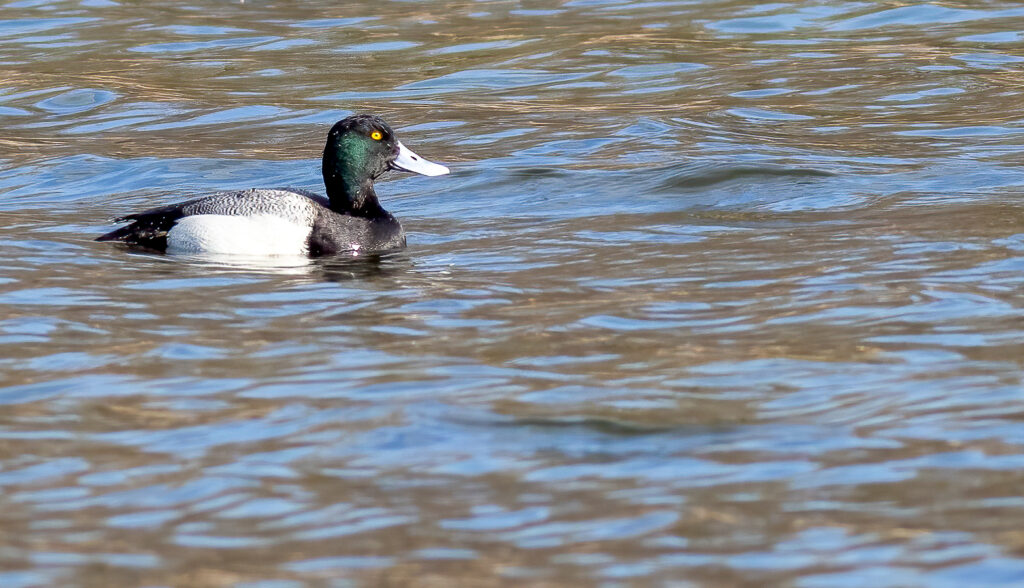
They were followed by an avalanche of so-called Ring-necked ducks. These are also diving ducks and somewhat similar looking. There is an article from the Audubon Society suggesting they be renamed as they have no visible ring around their neck but there is definitely one around their bill. From here on in, I will think of them as Ring-billed as he suggested. You can see from the videos how the fly all together and also diving all together. Rather amusing to watch.

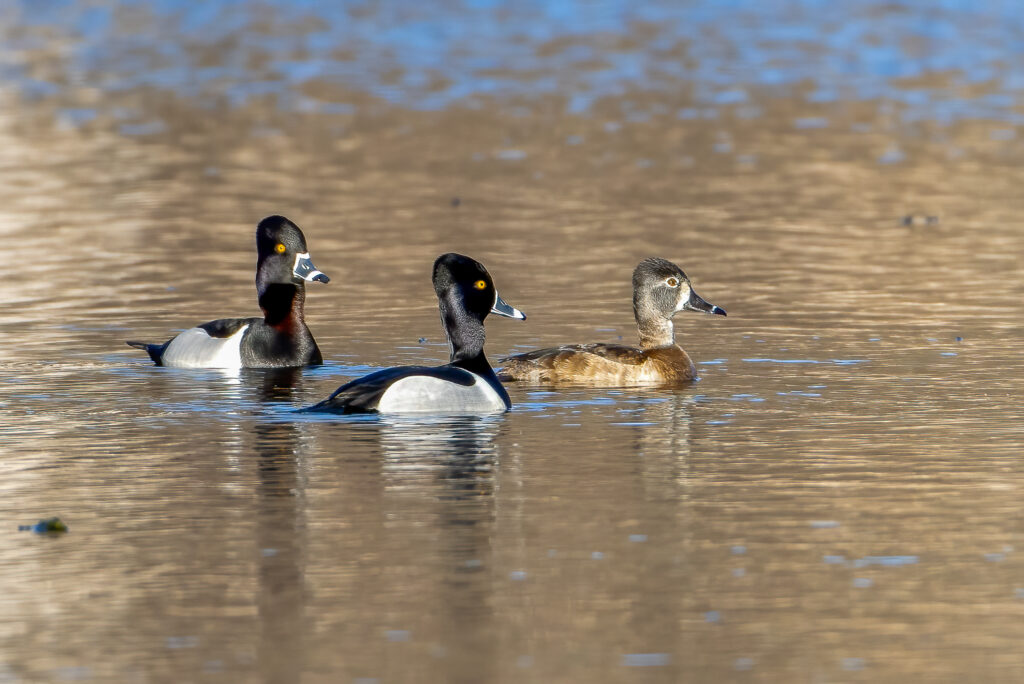
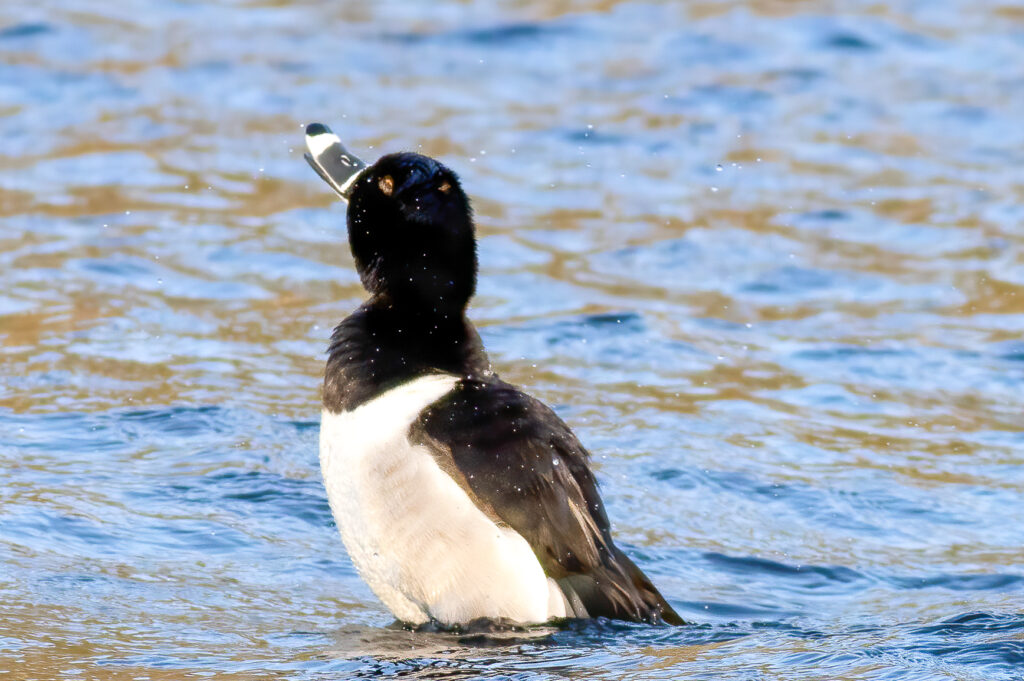
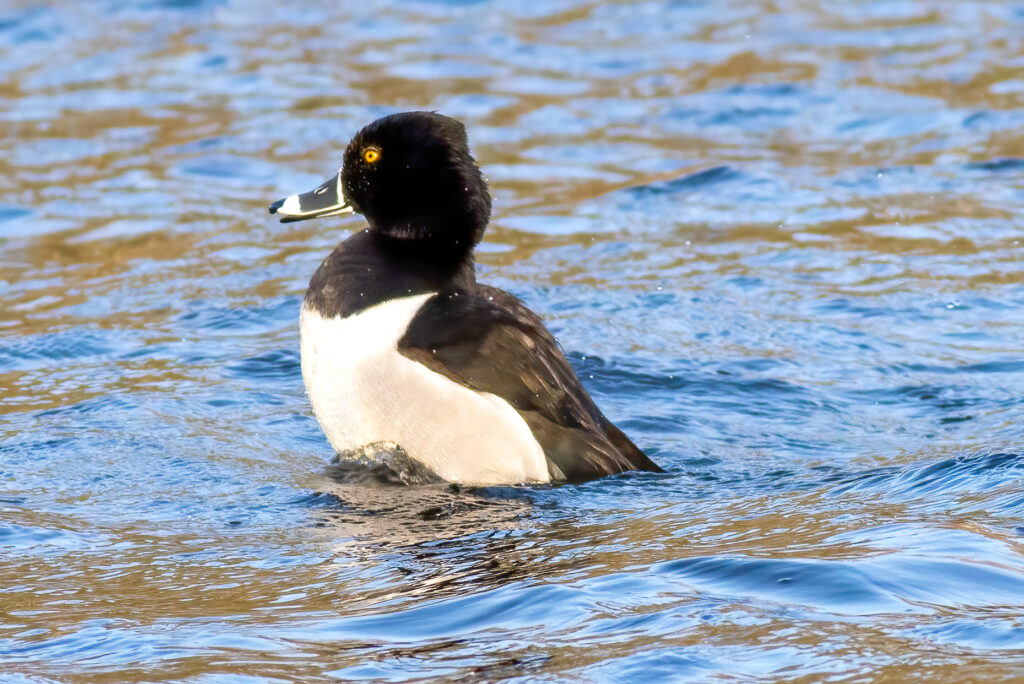




Next to arrive this year were the Common Mergansers. Here you see them looking quite well put together except for the last female, having a bad hair day!



The Mama mergansers are renowned for having large broods. From last year, here is a female with 12 ducklings in tow.
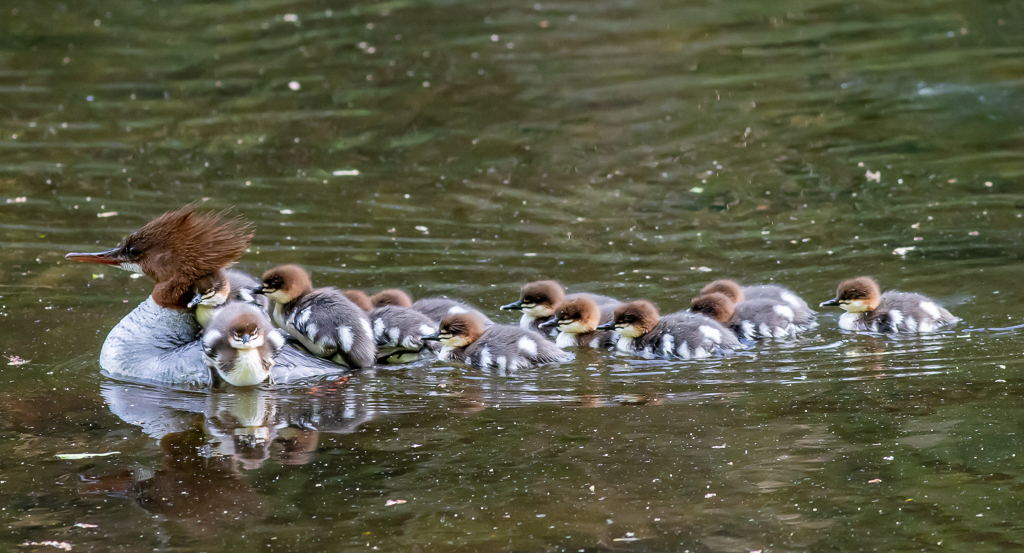
Cute as these are, their cousins, the Hooded Mergansers, are even sweeter to watch. Unfortunately, I have never yet seen Hoodie ducklings. Maybe next year…






In March one single little Pied-billed Grebe arrived in town and stuck around for several days. Not technically a duck, from the water surface it certainly looks like one. It has, however, lobed feet instead of the webbed duck feet. A very cute little water bird and a strong swimmer popping up now and then then taking off again for a long dive.





Next came the more colorful ducks: widgeons, teals, Northern Shovelers and woodies. These are all dabbling ducks. They don’t dive but nibble the vegetation on the surface or just below. I’ll start with the Widgeons. Here is a breeding pair; the green patch on the male is the indication of this breed. This couple hung together pretty tightly. He didn’t seem to appreciate her getting out ahead in this series. 🤪The final picture of the female shows how pretty she is, even if a bit plainer than her partner.





The Green-winged Teal is one of the smallest ducks in North America. Breeding males have a green stripe similar to the Widgeon but a dark bill and a distinct white stripe just above the wing. You can see the difference in size from the last picture where the teal is on the left next to a black duck and a mallard. The wing color shows up best in flight. In the first flight shot, he is flying over a pair of wood ducks.





The Northern Shoveler looks a little like a Mallard in coloration, but check out their enormous beaks! Hence the name! The female’s bright orange beak is also striking.

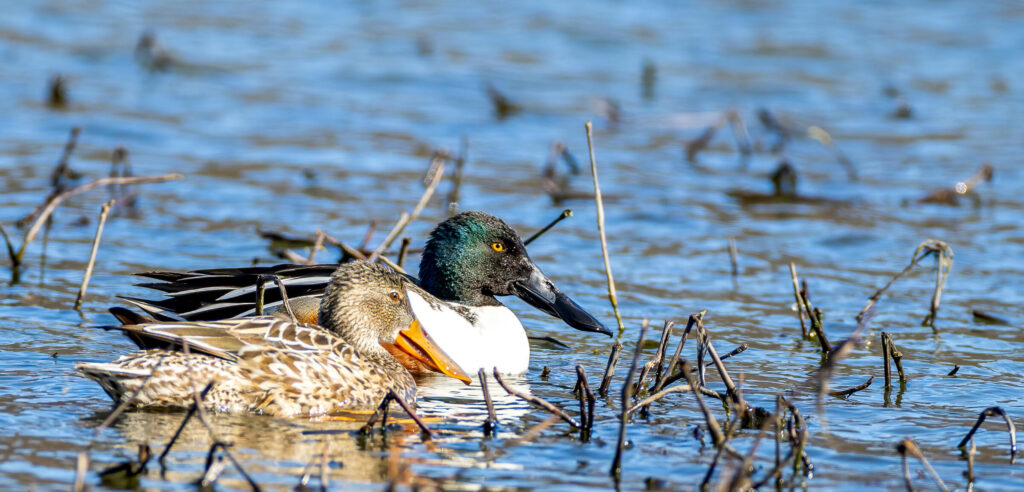
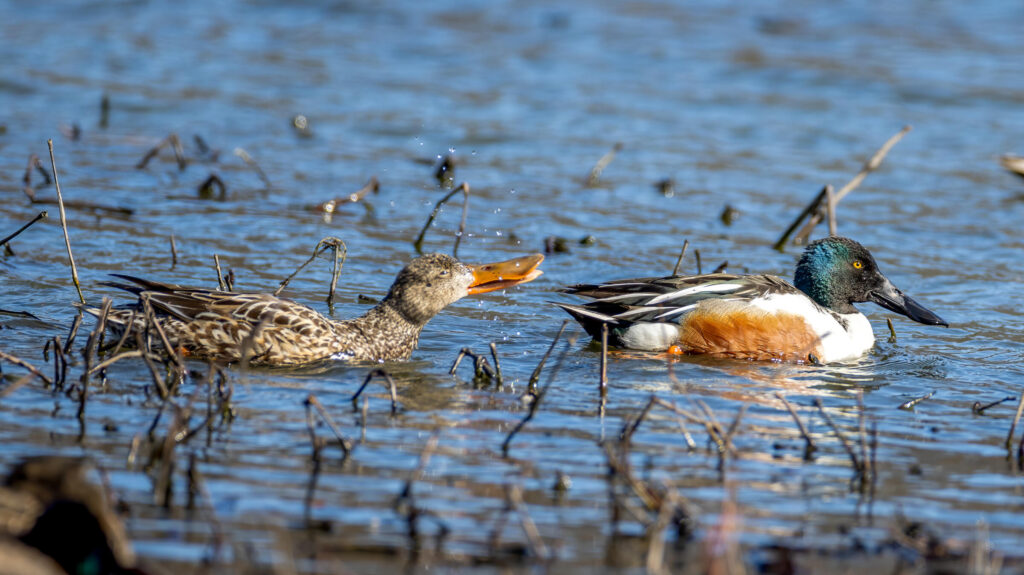
And finally the beloved woodies or Wood Ducks. Their beauty speaks for itself. Other than that, the coolest thing about them is how, on their first day of life, the babies have to jump out of the nesting tree, 15-60 feet depending, to swim away with their mother. You can see this at:





